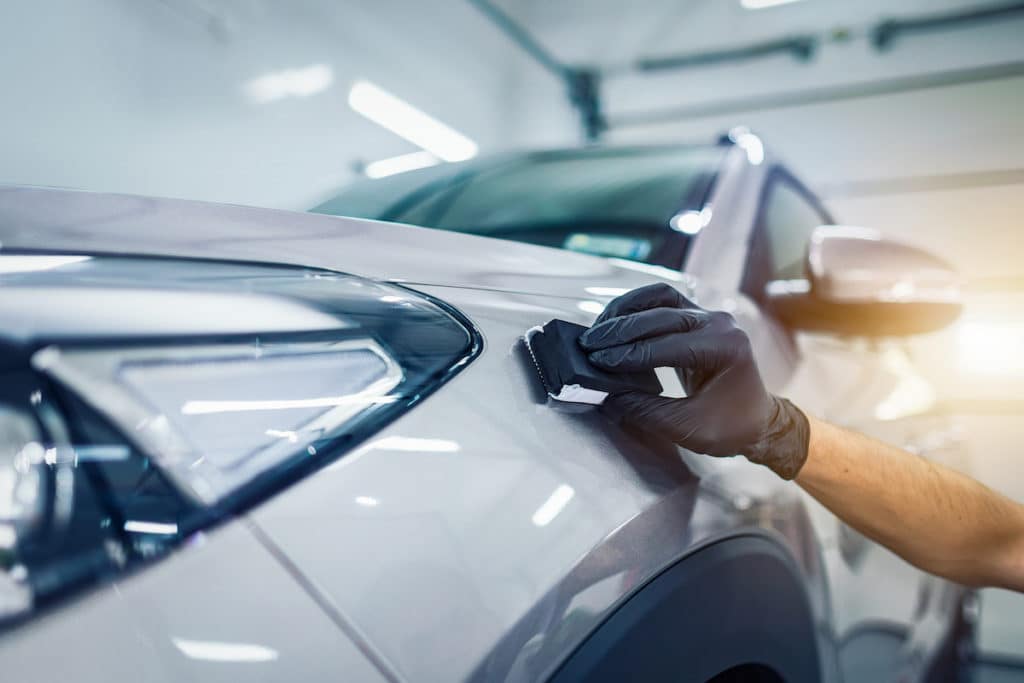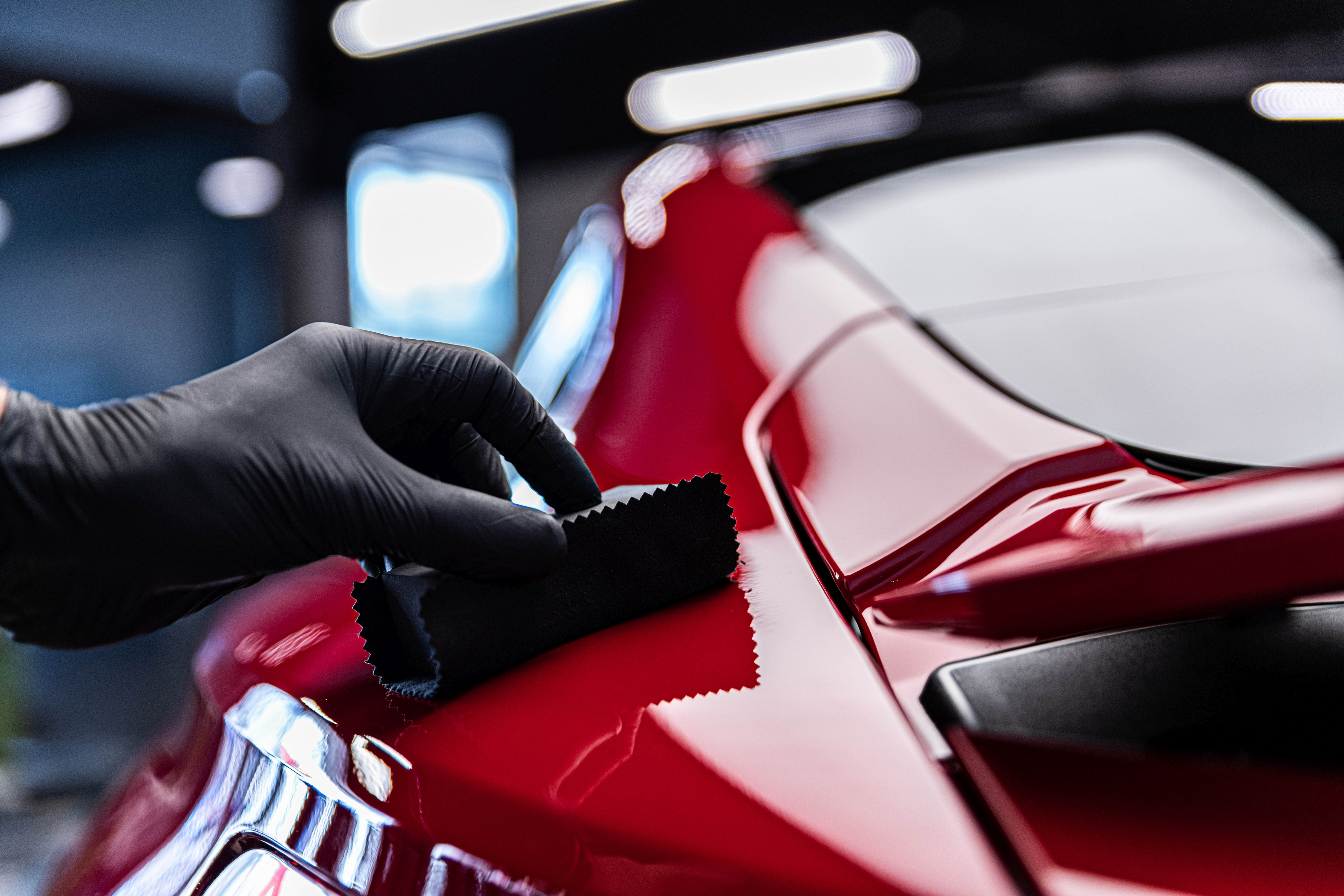Inexpensive and Trustworthy Ceramic Coating Philadelphia Provider for Your Vehicle
Inexpensive and Trustworthy Ceramic Coating Philadelphia Provider for Your Vehicle
Blog Article
Why Ceramic Layer Is the Ultimate Solution for a Perfect End Up
Ceramic coating has actually become a leading remedy for those looking for a remarkable surface for their lorries, thanks to its exceptional sturdiness and safety features. This innovative fluid polymer not only bonds perfectly with manufacturing facility paint however likewise provides a powerful barrier versus common hazards such as scrapes, UV rays, and ecological pollutants. Moreover, its hydrophobic residential or commercial properties simplify upkeep while improving visual allure. Nonetheless, recognizing just how this technology compares to traditional methods and exploring its application subtleties can disclose much more concerning its worth. What factors truly set ceramic layer apart?
What Is Ceramic Finishing?

When applied correctly, ceramic finish produces a hydrophobic surface that repels water and dust, making it less complicated to clean and preserve. Unlike conventional waxes or sealants, which generally offer temporary defense, ceramic coatings can last for numerous years, depending upon the item high quality and application approach. The procedure of using ceramic layer requires precise preparation, including thorough cleansing and in some cases repaint adjustment, to ensure optimum bonding and performance.
Ceramic finishes are not limited to automobile surface areas; they can additionally be used on numerous products, including glass, steel, and plastics, providing a versatile service for improving defense. Generally, ceramic covering stands for a substantial advancement in surface area security technology, incorporating both visual and functional benefits for a vast array of applications.
Benefits of Ceramic Finish
While numerous surface security choices exist, the advantages of ceramic finish attract attention due to its special residential properties and lasting performance. Among the key advantages is its exceptional sturdiness. Ceramic Coating Philadelphia. Unlike conventional wax or sealants that need frequent reapplication, ceramic coverings offer a resilient layer that can last for a number of years, significantly lowering maintenance efforts
An additional noteworthy benefit is enhanced protection against ecological contaminants. Ceramic layers develop a hydrophobic surface that fends off water, dirt, and various pollutants, making it easier to cleanse. This function not just protects the lorry's appearance yet also lessens the danger of rust and oxidation, particularly in severe weather.
In addition, ceramic coatings use exceptional resistance to UV rays, stopping fading and degradation of paint gradually. This UV protection is important for preserving the aesthetic worth of surfaces and lorries exposed to route sunlight.
Additionally, the shiny finish accomplished with ceramic covering boosts the overall visual charm, giving surface areas a showroom-quality sparkle. In general, ceramic finishes represent a significant development in surface area protection modern technology, providing long-lasting advantages that cater to both useful and aesthetic demands.
Just How It Functions
Understanding the science behind ceramic finishes discloses how they supply such exceptional security and longevity. At its core, a ceramic covering is a fluid polymer that chemically bonds with the automobile's manufacturing facility paint. This bonding produces a protective layer that is both oleophobic and hydrophobic, repelling water, dirt, and oil. The key part of most ceramic finishes is silicon dioxide (SiO2), which is derived from quartz. This substance adds to the finish's solidity and resistance to scrapes, UV rays, and ecological contaminants.
The application process includes several steps, consisting of surface area preparation, click here to find out more which is crucial to accomplishing optimum attachment. When applied, the layer undergoes a healing procedure, during which it sets and forms a semi-permanent bond with the paint surface area. This bond is what distinguishes ceramic finishings from conventional waxes and sealants, giving a longer-lasting protective obstacle that can withstand for many years.
Furthermore, the thickness of the layer can boost its protective top qualities, making sure that it can endure severe problems. Inevitably, the science of ceramic coatings integrates advanced products with additional resources cutting-edge application methods to deliver an unequaled degree of security and aesthetic improvement for vehicles.
Comparison With Typical Techniques
The benefits of ceramic finishings become specifically evident when compared to conventional paint protection techniques such as waxes and sealants. While waxes offer a temporary sparkle, typically lasting a couple of weeks to a couple of months, ceramic coatings offer a resilient safety layer that can endure for several years. This longevity significantly decreases the frequency of reapplication, making ceramic coatings a more economical solution with time.
Furthermore, conventional techniques typically need extensive prep work and several applications to achieve an adequate level of defense. In comparison, ceramic coatings bond at a molecular level with the automobile's surface area, creating a durable shield against environmental pollutants like UV rays, acid rainfall, and road salts. This bond enhances the vehicle's resistance to scrapes and swirl marks, which are common with traditional waxes and sealers.
Moreover, the hydrophobic residential or commercial properties of ceramic coatings push back water and dust, resulting in much easier cleansing and maintenance. On the other hand, wax and sealant-treated surface areas can attract grime, demanding even more regular cleaning - Ceramic Coating Philadelphia. Overall, ceramic coverings not only supply premium defense but likewise provide an extra enduring and visually enticing coating, developing them as the favored option for critical car proprietors
Application and Upkeep Tips

Utilizing a foam applicator, apply the covering in small areas, complying with the manufacturer's standards relating to density and overlap. Allow sufficient curing time between coats, generally 24-hour, to make certain appropriate bonding. After application, it is vital to prevent exposure to water or harsh elements for at the very least a week to permit the coating to fully treat.
Furthermore, making use of a ceramic upkeep spray can boost the finish's hydrophobic homes and durability. Regular inspections for any type of signs of wear will assist keep the finishing's honesty and maintain that excellent finish.
Conclusion
In conclusion, ceramic coating arises as an exceptional alternative for achieving a perfect vehicle coating. By forming a durable bond with factory paint, ceramic coating efficiently guards versus scrapes, UV rays, and environmental pollutants.

Report this page